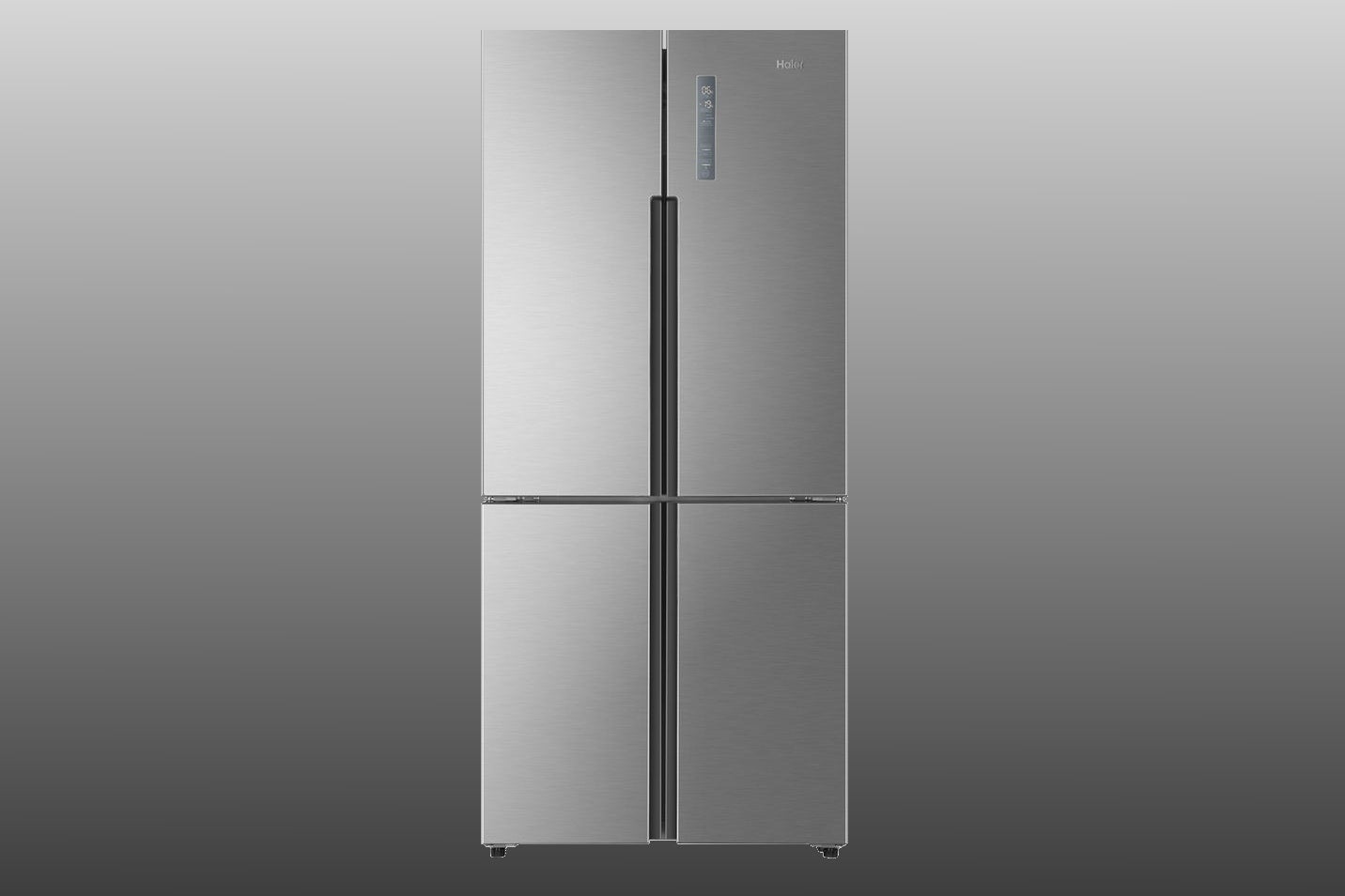Anker EverFrost Review
A robust and powerful portable, powered cooler

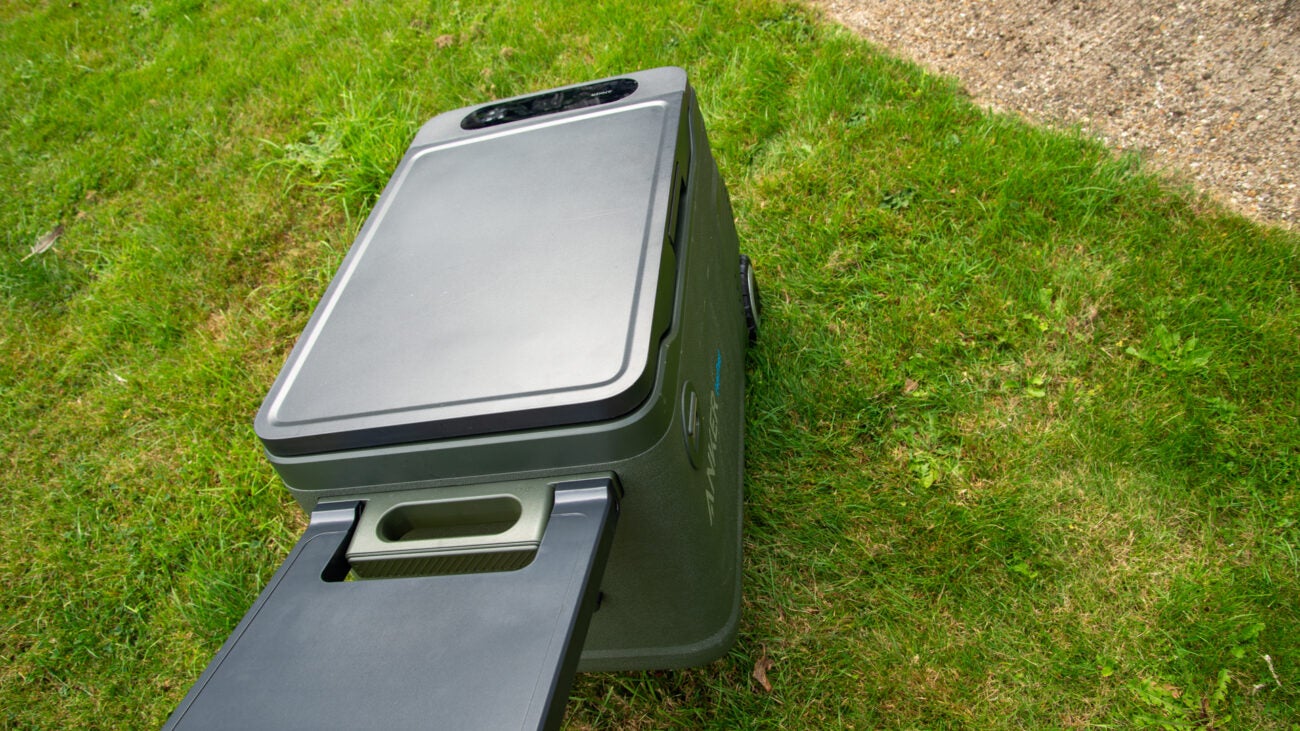
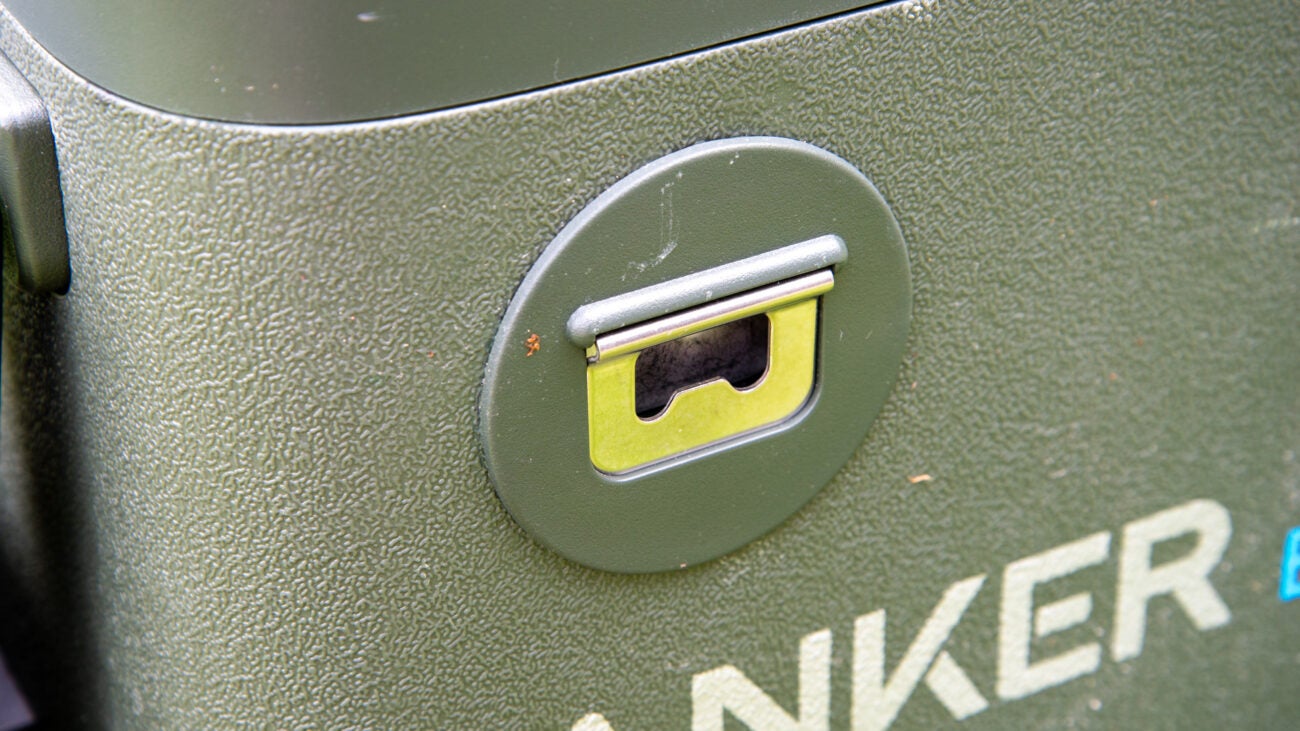
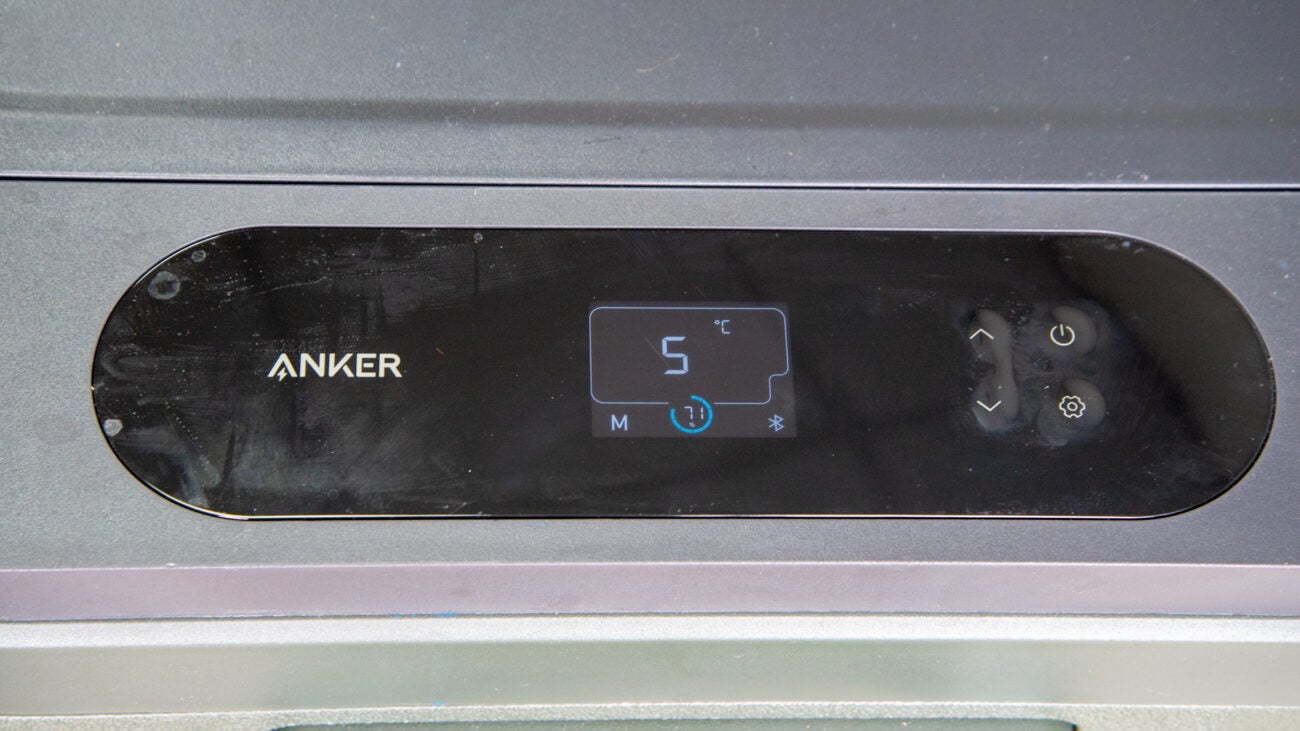
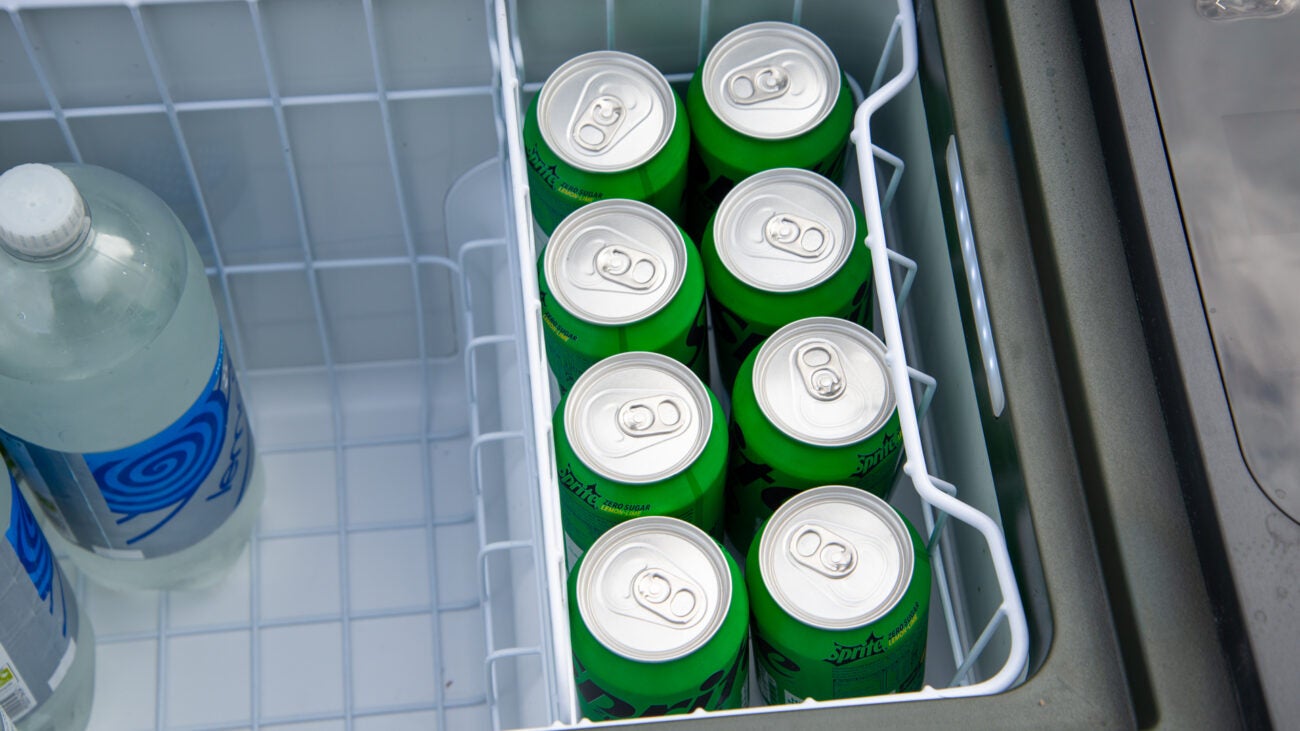
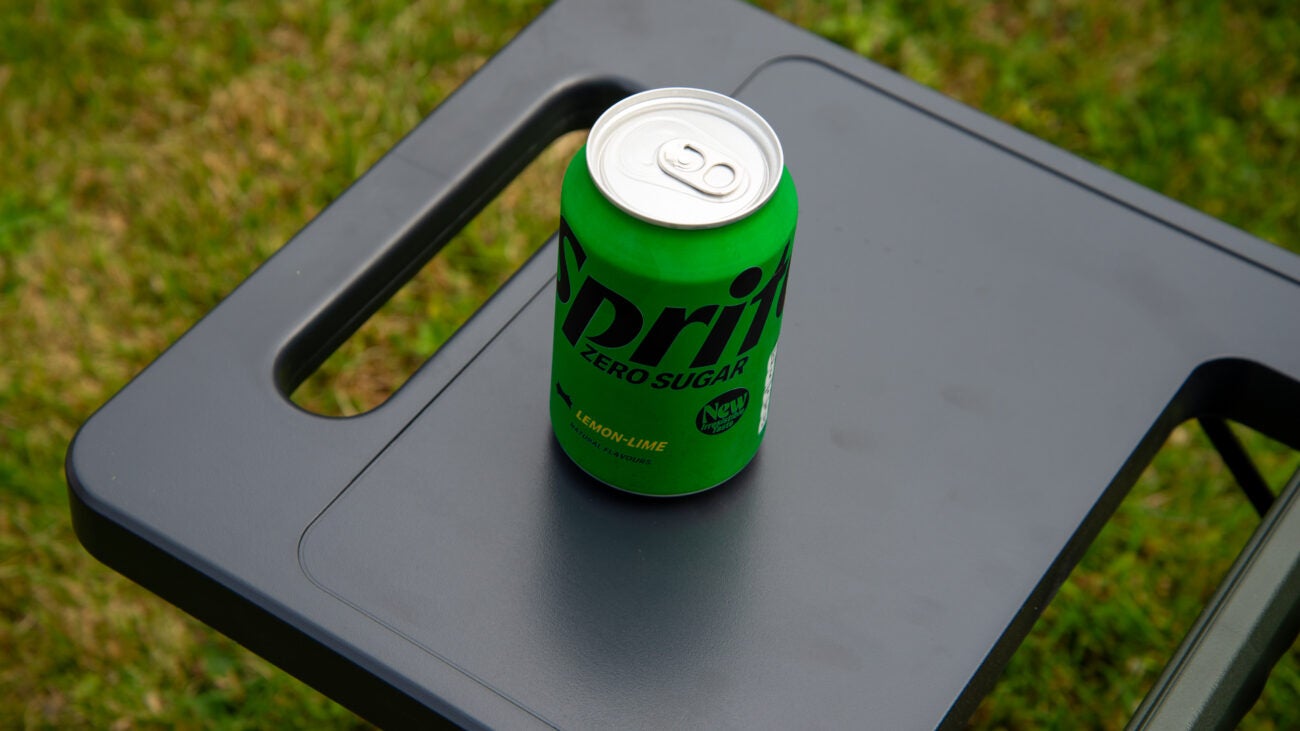

Verdict
A super-rugged cooler, the Anker EverFrost gives you all of its space for food and drink, as it’s powered and doesn’t need ice to keep the contents cool. Capable of maintaining temperatures with little variation, this is as good as a regular fridge or freezer. With a flip-up table and integrated wheels, the EverFrost is a great travel companion for picnics, camping, or anywhere else you go.
Pros
- Excellent temperature control
- Comes with wheels and table
- Rugged
Cons
- One compartment
Key Features
- TypeThis is a portable powered cooler, which can be powered by mains or the optional battery.
Introduction
It might look like a traditional cooler, albeit a large one, but the Anker EverFrost is actually a powered cooler that can operate as a fridge or a freezer.
Rugged, with excellent temperature control and built-in wheels and a tray-table, this is a brilliant gadget for picnics, parties and camping.
With the optional add-on battery, this fridge can even go off-grid for wire-free cooling.
Design and features
- Rugged body
- Integrated tray
- Smart control panel
The Anker EverFrost is available in three sizes: 33-litres, 43-litres, and 53-litres. All look the same from the outside and have the same basic features, but the larger 53-litre model has two compartments with individual temperature control, while the other models have a single compartment.
The advantage of the larger model is that you can have one side as a fridge and the other as a freezer, whereas the smaller ones can only be a fridge or a freezer.
With the EcoFlow Glacier, this portable cooler has an optional divider that can be installed to split the space, making it more flexible in some ways. However, when the Glacier is set so that one side is a freezer and one side is a fridge, there’s a maximum temperature variation of 15°C between the sides. The Anker EverFrost doesn’t have this restriction, as its two compartments are separate. As a result, the Anker EverFrost can be set to standard fridge/freezer temperatures with no restriction.
I’ve got the single-zone 43-litre model on review. This has one compartment that can be set between -20°C and 20°C. Temperatures are set via the control panel, which is a little hard to see when it’s in full sunlight.
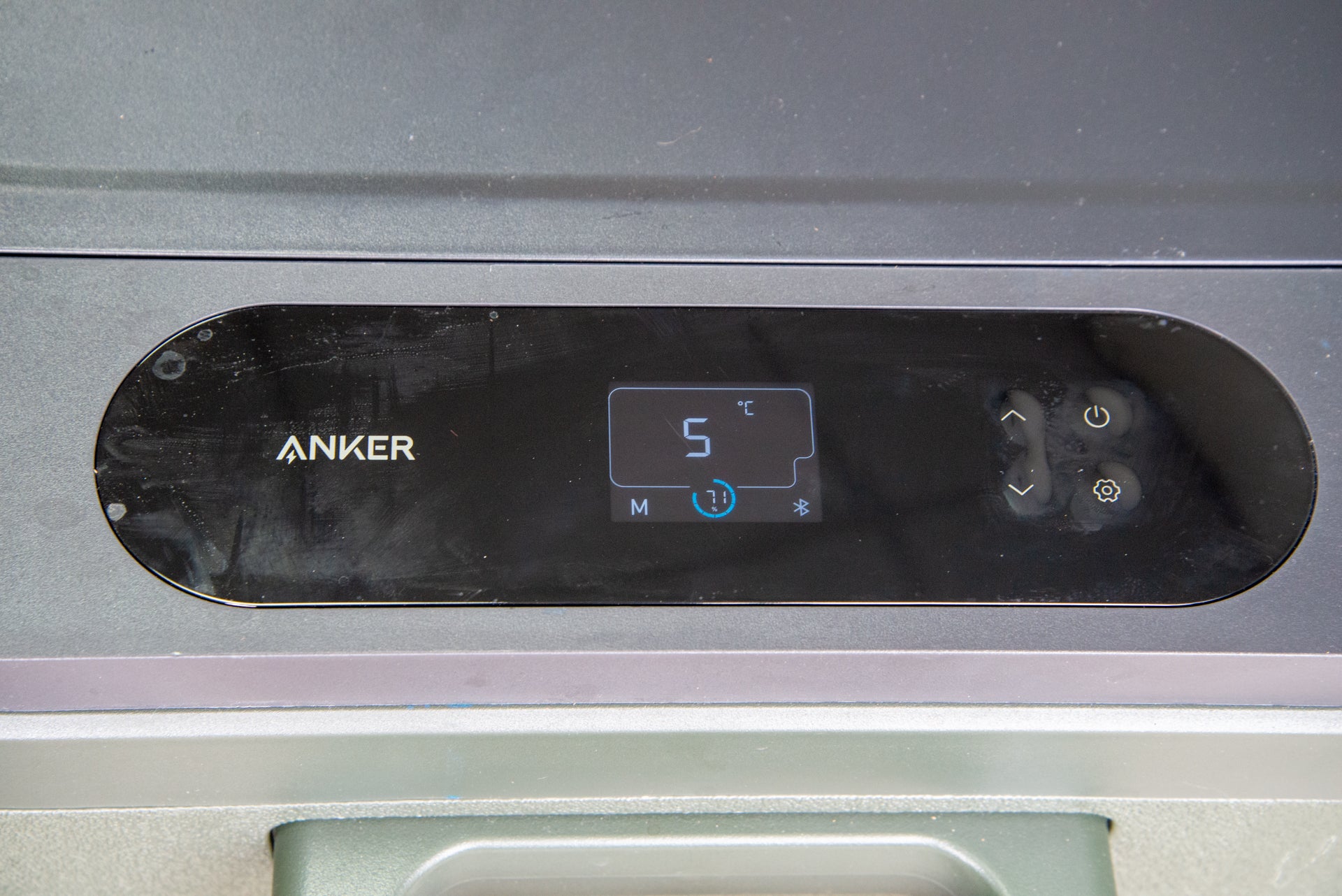
Alternatively, there’s a Bluetooth app that lets me set the target temperature, plus monitor the state of the optional battery.
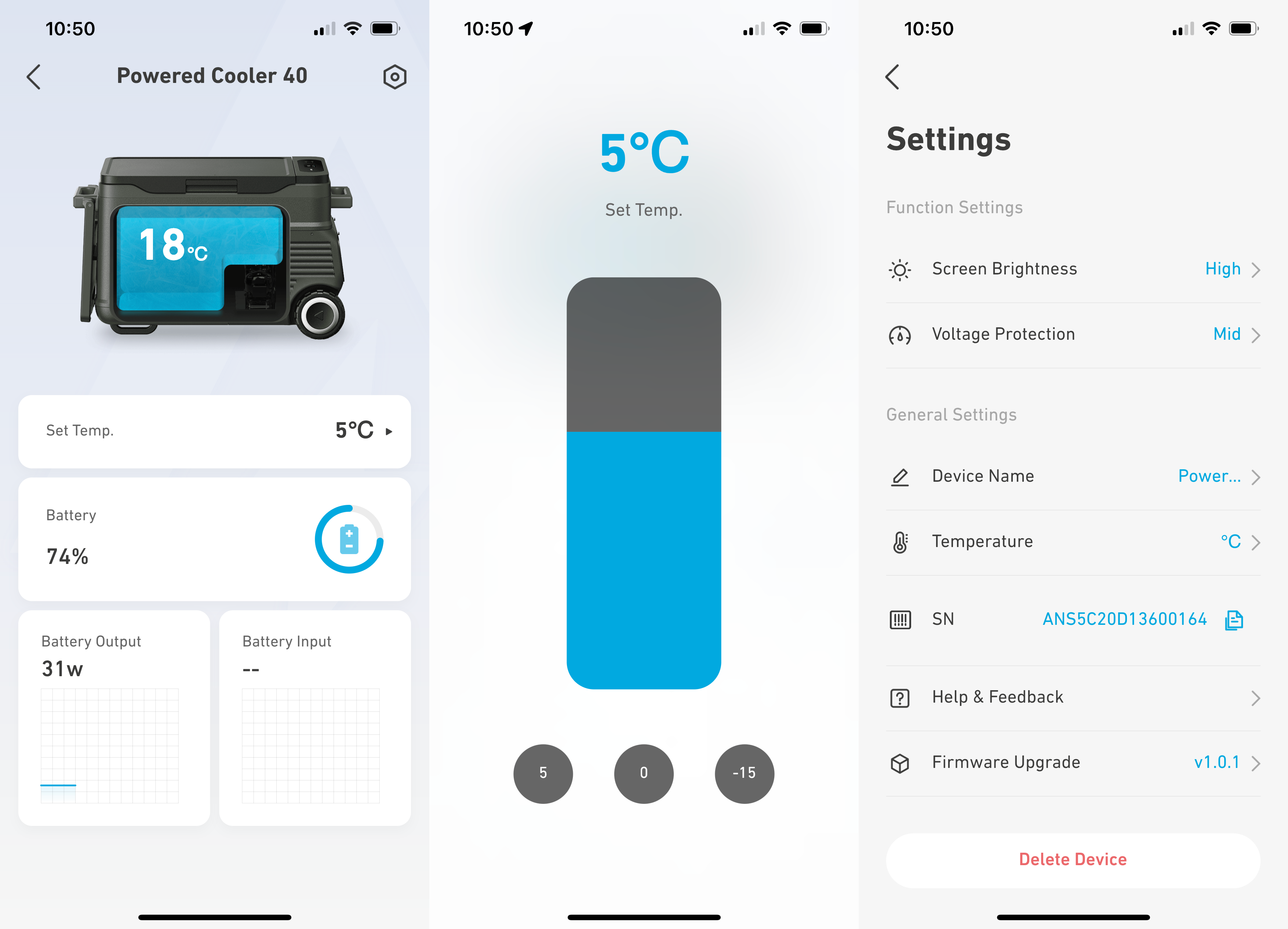
Internally, there’s a wire basket that fills up the space. It’s an L-shaped basket, with a shallower side, and a larger deeper side.
Overall, the version that I have can hold 54 330ml cans or 28 500ml bottles. That’s a very good amount of room, and there’s even enough depth to stand up 2-litre bottles of drink.
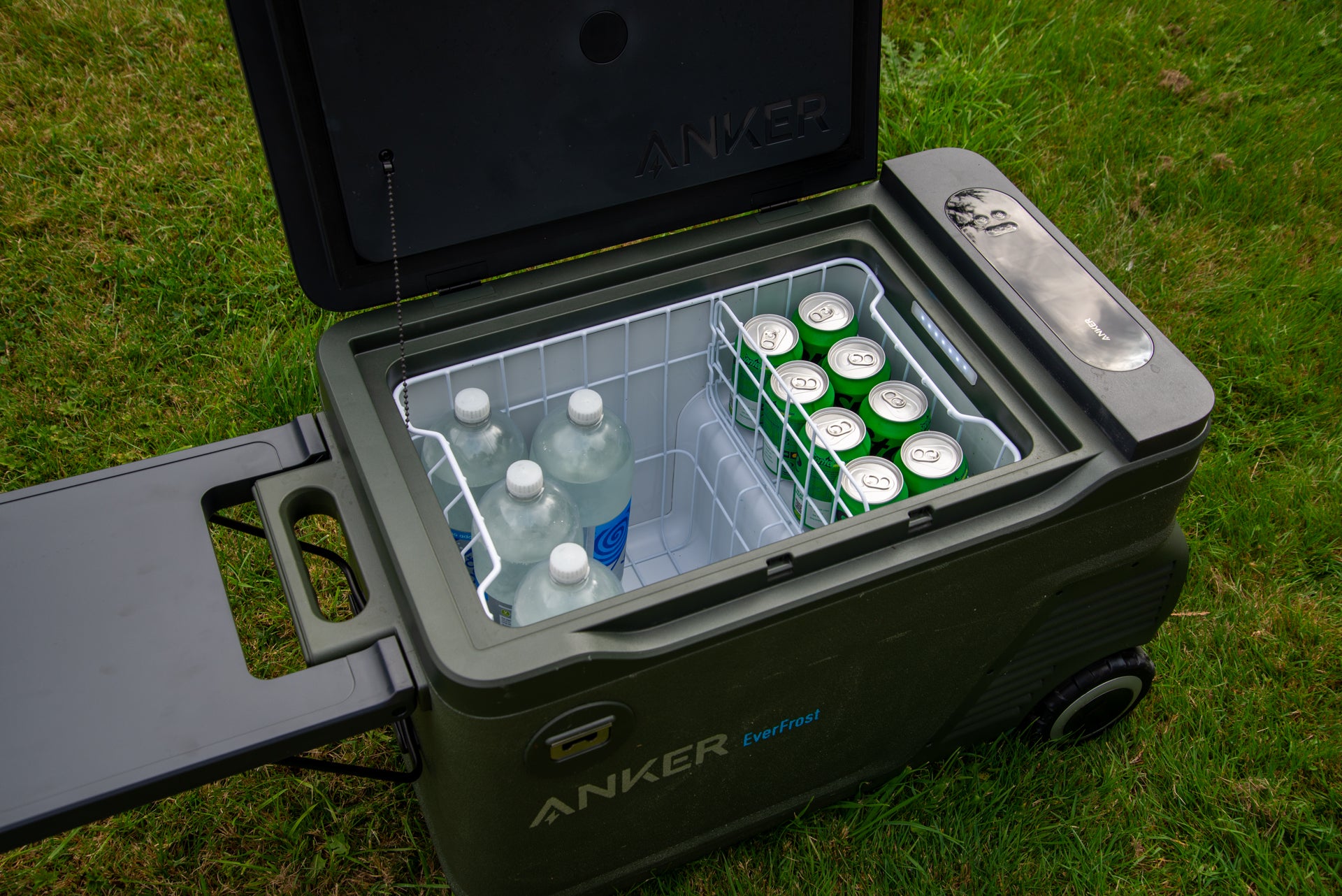
Anker has done a brilliant job with the EverFrost’s design. It has a built-in bottle opener on the side.
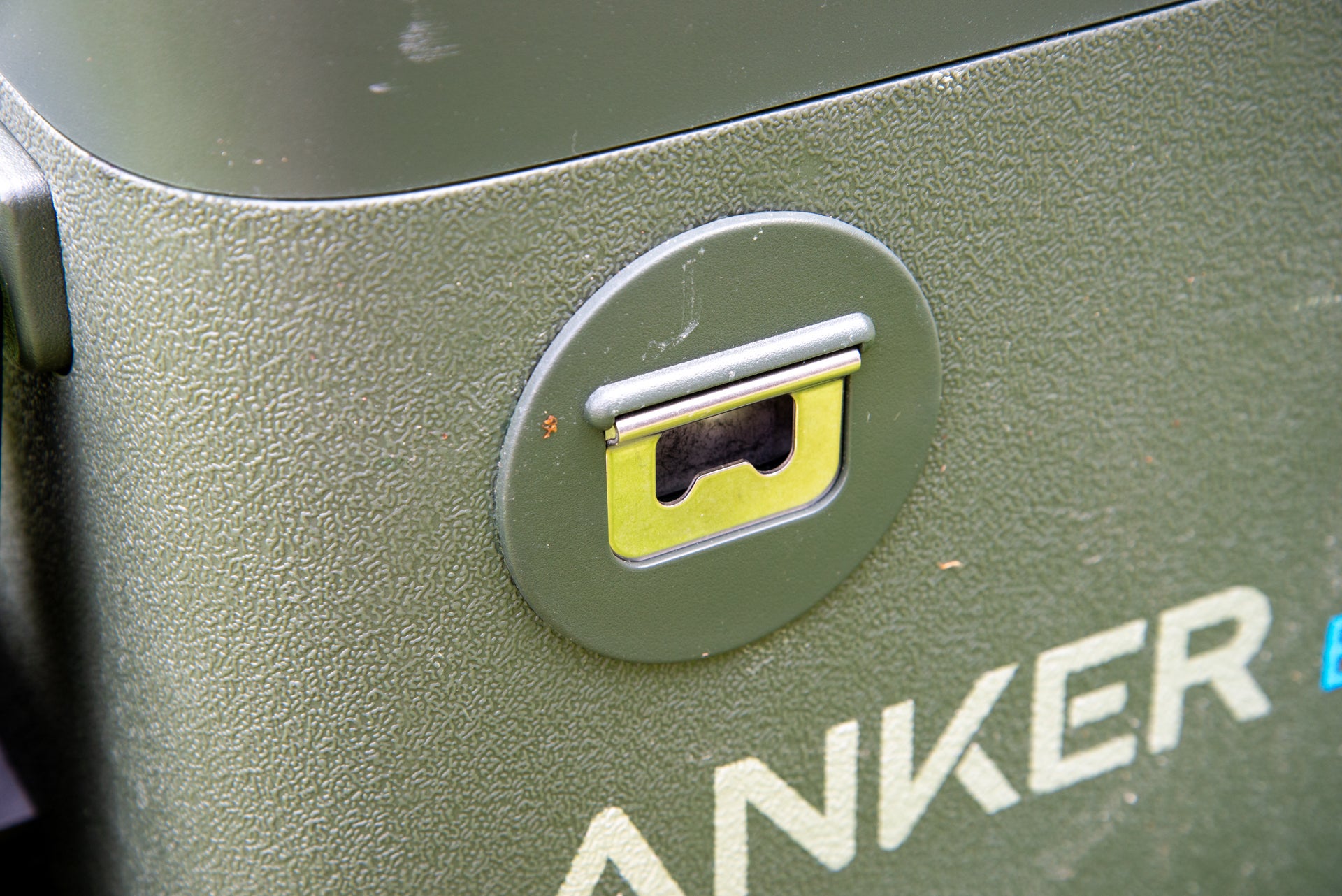
There’s a lift-up tray to the side, which is perfect for placing a cold beer down or pouring drinks.
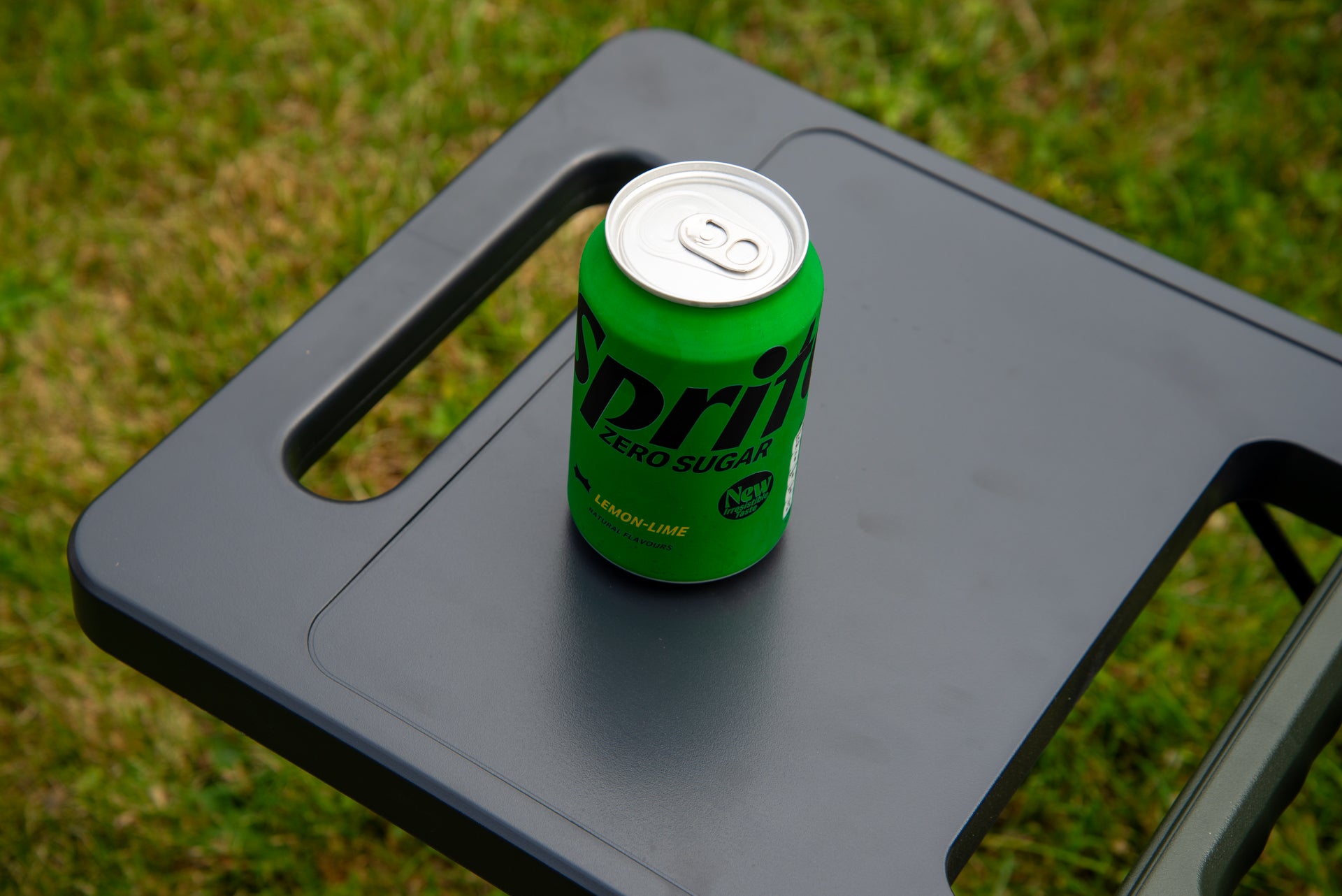
Having a single wire basket is useful, as I could lift out the contents before moving the EverFrost around. That’s important, given that the cooler weighs 24kg by itself.
Once the cooler is on the floor, it’s easy to move around thanks to the built-in handle and chunky wheels. This really is a cooler built for portability.
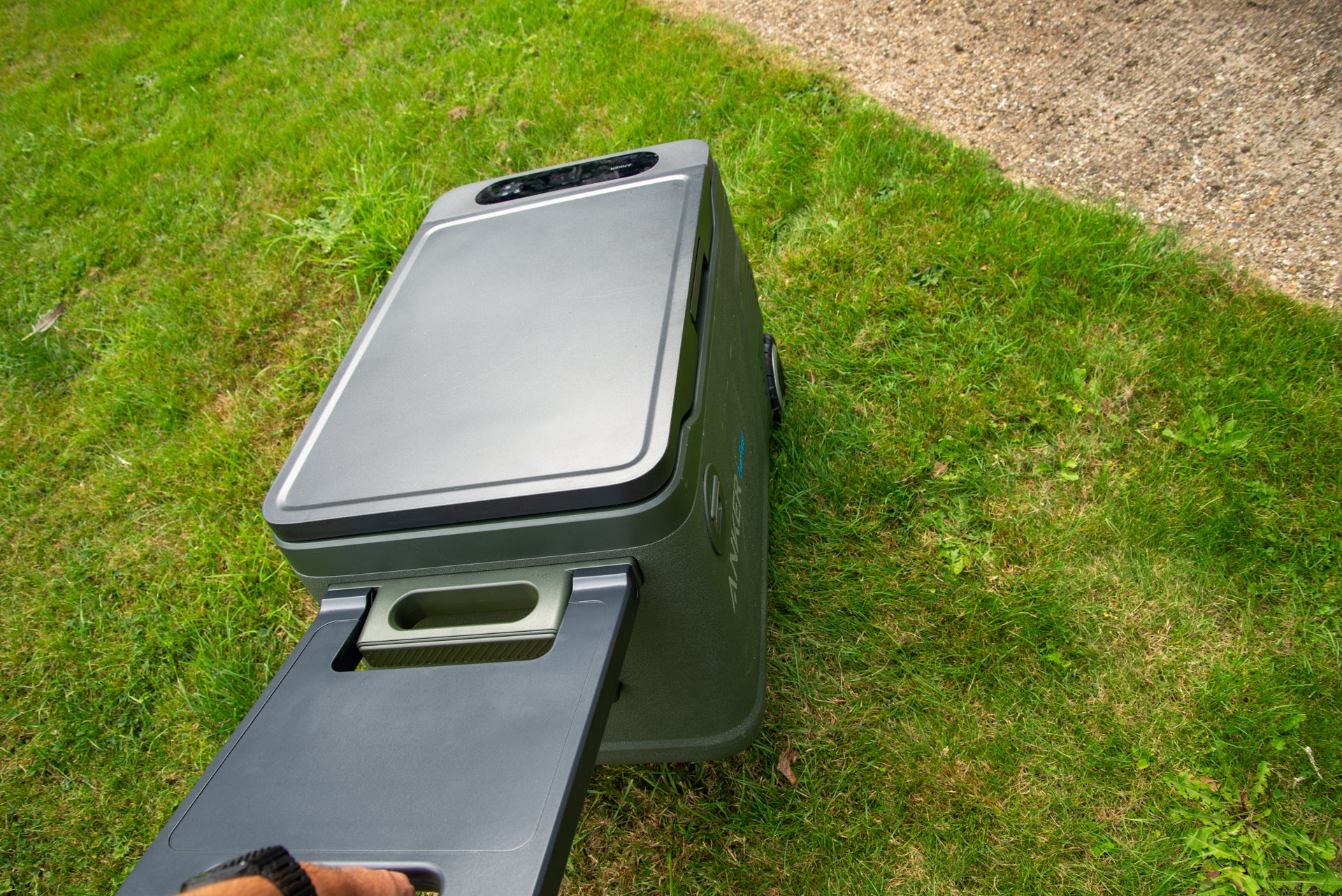
Battery and charging
- Mains plug for normal use
- Optional battery for off-grid and solar
- Car charging
For most cases, the Anker EverFrost will be powered by the provided adaptor, which plugs into the mains. There’s also a car adaptor in the box, providing 12V power for the fridge/freezer. That’s quite handy for travelling, as the fridge can be kept cold when you’re moving.
This is all you need if you’ll mostly use the EverFrost within reach of a power socket (or car). If you want to go off-grid or use solar, you need the optional battery (£300 for a 299Wh model). The battery slides into the section at the back, leaving its USB power outlets (for topping up phones) and USB-C charging port on display.
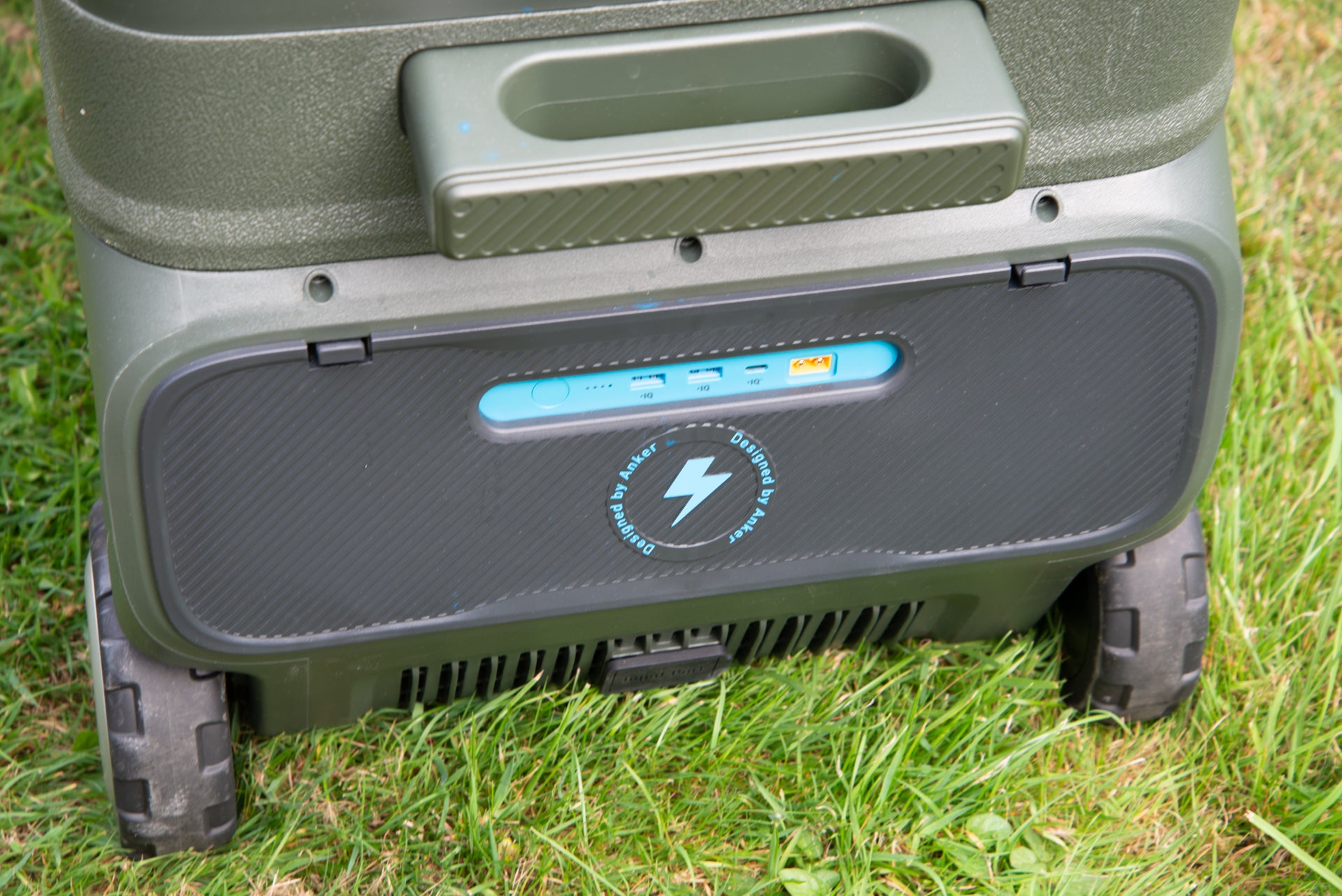
That’s alright, but exposed ports mean the system is no longer weatherproof; a cover is being developed, so these connections can be sealed up when not in use.
The battery can be charged in situ, when either mains power or the 12V car input is used. However, the battery can also be charged via its USB-C port, or the provided solar input (max of 100W), for complete offline charging.
With the battery in place, you can get up to 42-hours (33-litre), 35.8-hours (43-litre) or 27 hours (53-litres), assuming the EverFrost is set to 4°C. That seems about right in my experience, although it’s worth pointing out that these figures assume that the cooler’s not placed in too-hot an area, so keep it out of direct sunlight.
Anker doesn’t quote how many charge cycles the battery lasts for, but given that it’s an NMC battery, I’d estimate that it will take around 800 charges before it hits 80% capacity. That’s a lot lower than on a modern battery station, such as the Dabbson DBS2300, which lasts for 4000 cycles.
However, the Anker EverFrost’s battery will likely be used less often. Is it a worthwhile upgrade? Well, it depends on how you want to use the fridge. If you’re rarely off-grid, then no. The integrated battery is neat if you only need a day or two of off-grid cooling at a time. If you want more time off-grid, then a general-purpose battery power station will be a better bet.
Performance
- Excellent temperature control
- Better running costs in fridge mode
I started by running the Anker EverFrost in fridge mode, setting it to 5°C. On average, the fridge was 5.85°C, which is just 0.85°C warmer than the target. Temperature variation is very good, with most temperatures within +/-0.84°C. That’s excellent in a fridge.
Moving to the freezer test, I set the EverFrost to -18°C. I found that the average temperature was -17.18°C, which is only 0.82°C warmer than the target. Again, the variation in temperature readings was good, with mostly a +/-0.49°C deviation from the average. That’s excellent and shows that the EverFrost can maintain very stable temperatures.
At these kinds of temperatures and variations, the EverFrost can replace a standard fridge or freezer.
It’s not the cheapest device to run. Set to fridge temperatures, I estimated that it would cost £18.25 a year, while at -18°C, it would cost £64.39 a year to run. Buy the Hotpoint H7X83AW, and you’ll get a similar running cost of £68.34 a year, although that’s for running a 231-litre fridge and a 104-litre freezer together.
Latest deals
Should you buy it?
You want portability first and foremost: This cooler is easy to move around and has some clever design touches, including an integrated table and bottle opener.
You want a bit more flexibility: The compartments are fixed on EverFrost and there’s no ice maker option available.
Final Thoughts
The Anker EverFrost is built for travel. It’s chunky and well-made, and the big wheels and handle make it simple to move around. I love the flip-up tray and built-in bottle opener, which show that a lot of thought has gone into its design.
For those often on the move, this is a brilliant portable cooler; those that want a touch more flexibility and an ice maker for use at home, may find the EcoFlow Glacier a better bet.
How we test
Unlike other sites, we test every fridge freezer we review thoroughly over an extended period of time. We use industry standard tests to compare features properly. We’ll always tell you what we find. We never, ever, accept money to review a product.
Find out more about how we test in our ethics policy.
We test for at least two weeks.
We use temperature sensors to monitor the internal temperature to help us accurately compare models from different manufacturers.
FAQs
Capacity is the big difference, but the largest 53-litre model has two compartments; the smaller models have just one.
Yes, if you buy the optional battery. Without the battery, you have to use mains power or the car charger.

